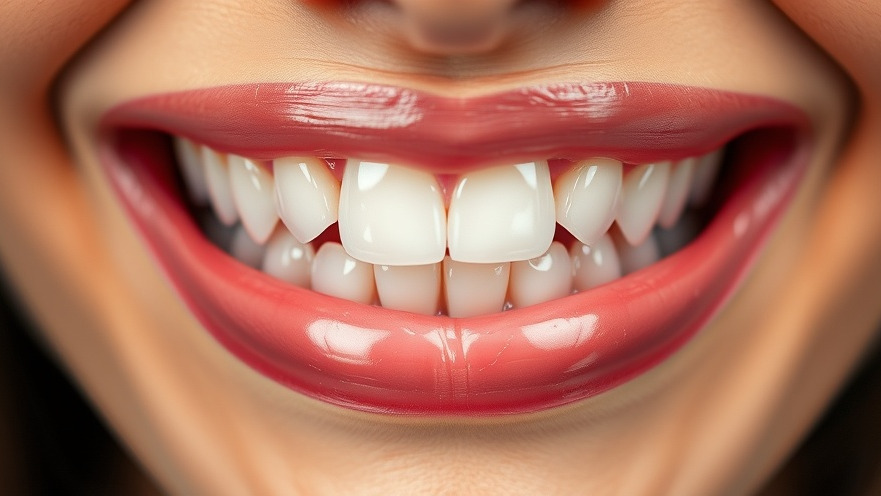
The Shift from 2D to 3D: A Paradigm Change in Aesthetic Dentistry
The landscape of aesthetic dentistry has undergone a remarkable transformation in recent years, as the limitations of two-dimensional digital smile design become more evident. While 2D designs enabled dentists to visualize potential results for their patients, the growing demands of clinical precision and elevated patient expectations have sparked a paradigm shift towards three-dimensional design methods.
Understanding the Initial Impact of 2D Digital Smile Design
Introduced by Dr. Christian Coachman, 2D digital smile design revolutionized aesthetic dentistry by allowing practitioners to overlay digital images of tooth shapes onto photographs of patients’ faces. This innovative approach led to a significant increase in treatment acceptance rates, as patients gained confidence through visual representations of their new smiles.
However, 2D designs, while a valuable tool for communication, began revealing critical limitations as our understanding of facial aesthetics and digital capabilities evolved. The inability to accurately represent the curvature of the dental arch and the focus primarily on anterior teeth created gaps in treatment planning.
The Limitations of 2D Smile Design
The shortcomings of 2D smile design can largely be attributed to its reliance on abstract mathematical guidelines such as the Golden Proportion. These notions can create unrealistically beautiful images but may not align with the complexities of three-dimensional oral anatomy. For instance, when planning for comprehensive cases involving posterior teeth, the flat representations fail to account for actual oral geometry, complicating the execution of aesthetic procedures.
Furthermore, the nature of traditional 2D approaches means that only the surface contours of teeth are visualized. This leads to incomplete treatment plans that overlook essential details such as lingual contours and the intricate transitions between anterior and posterior teeth.
A Future Unveiled: The Emergence of 3D Digital Smile Design
As the limitations of 2D smile design became apparent, the industry began to pivot toward 3D digital smile design, which promises enhanced visual clarity and improved patient outcomes. This transition is not merely a technological upgrade; it represents a fundamental shift in how practitioners approach aesthetic dentistry.
3D digital smile design allows for accurate representation of the entire dental arch, enabling practitioners to visualize all aspects of a patient's oral anatomy. This comprehensive approach enhances the planning process, offering a more realistic design to guide clinical execution. Moreover, the capacity for subtraction and addition in the digital design enables dentists to play with designs in real time, tailoring smiles to the individual anatomical context rather than relying solely on abstract proportions.
Practical Insights: Benefits of Embracing 3D Technology
Transitioning to 3D technologies offers several unique benefits that extend beyond aesthetic outcomes. Firstly, better planning enhances clinical efficiency. The precise representation of oral structures leads to fewer adjustments during the actual procedure, minimizing chair time and increasing patient satisfaction.
Secondly, 3D design fosters a more collaborative environment between dentists and laboratories. The integration of cutting-edge technologies enables seamless communication, ensuring that both parties are on the same page regarding the desired outcome.
The Emotional Undertone of Digital Smile Design
The implications of this technological shift resonate deeply with patients. In a world where aesthetics significantly influence self-esteem, the ability for patients to visualize their new smile in three dimensions grants them a sense of agency in their treatment journey. This engagement fosters trust and encourages informed decision-making, reinforcing the doctor-patient relationship.
What Lies Ahead: Future Innovations and Predictions
As we look forward, the integration of augmented reality and artificial intelligence within aesthetic dentistry could further refine the digital smile design process. These innovative technologies promise to enhance patient interactions, providing simulations that go beyond static images to immersive experiences that allow patients to 'try on' smiles in real time.
Practitioners must remain agile, adapting to these advancements to stay relevant in a competitive and rapidly evolving market. Those who embrace change will likely gain a substantial edge, improving patient trust and practice growth.
In conclusion, the transition from 2D to 3D digital smile design marks a pivotal point in aesthetic dentistry, redefining treatment methodologies and patient expectations. Embracing these advancements will be crucial for practitioners aiming to meet the evolving demands of the industry and restore patient confidence.
For those ready to elevate their practice, it’s time to rethink your digital strategies and embrace the future of aesthetic dentistry by investing in 3D technologies.
 Add Row
Add Row  Add
Add 




Write A Comment